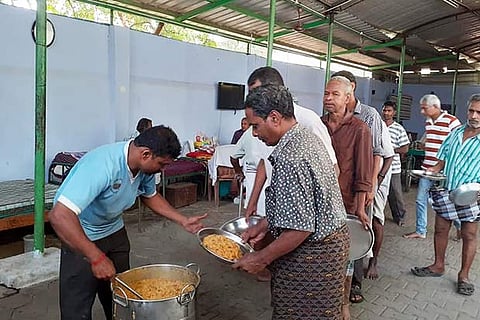

Chennai
Volunteers who have taken it upon themselves to prepare home-cooked meals for those affected by COVID highlight the Samaritan spirit of many during the ongoing pandemic. This also draws attention to another aspect of households in India, which many of us tend to shrug off as an open secret. Volunteers involved in packing meals noted that the demand for such meals came significantly from homes where the majority of residents happened to be men, many of whom had no idea how to cook their own meals.
The fact that it takes a pandemic to reignite the discussion pertaining to the role of men in the kitchens of an average home in India speaks volumes about how this phenomenon has been sidelined from discourses on shared responsibilities. Last year, a Malayalam film called The Great Indian Kitchen set off debates on how a big chunk of the lives of homemakers in India is spent in these kitchens, while the menfolk bask in the glow of entitlement and make one unreasonable demand after the other that keep these unpaid chefs on their toes for the better part of a day.
Even between couples where both the man and woman are earning members, it’s always the woman who ends up being probed about how she could possibly balance household chores and a high-flying corporate career. We can’t remember the last time men in the C-suite were asked how much time they spent doing the laundry or dishes. The fact that the kitchen has been implicitly declared as a ‘women only’ zone, except of course in cookery shows on TV where the best chefs are always men, might have its roots in the age-old nature vs nurture argument.
Take, for instance, the manner in which the idea of play routines is hardwired into the minds of children from a young age. Just walk into a toy store and browse through the selections targeted at children of both sexes. You won’t be surprised to find cookery sets with models of every kitchen appliance, packaged with photographs of girls, who seem to be having a whale of a time cooking up make-believe MasterChef recipes in their living rooms.
Interestingly, such depictions barely feature boys, as that demographic is usually served by action figures, replicas of automatic weapons, fidget spinners, and other pastimes. Even in the schooling years of millennials, girl students would be segregated into the home science divisions, while boys could opt for something alternative in the SUPW (Socially Useful Productive Work) period.
But all such transgressions have found their comeuppance during the COVID-19 crisis. Families across India were compelled to come to terms with the so-called unrecognised contributions of the homemaker day in, day out. From the simple act of making one’s own coffee at the crack of dawn to putting together a one-course meal to serve all members of the family at lunchtime, men were finally prompted to step into the haloed grounds of the kitchen.
Such learnings need not be restricted to lockdowns and health crises; they can be made part and parcel of everyone’s daily chores. The time that you probably spend on social media admiring some Frenchman build his own study table using recycled wood could probably be used to learn some rudimentary home improvement techniques, such as replacing a broken light fixture in one’s living room or repairing one’s own bathroom faucet in the event that the plumber fails to turn up on the day of a curfew. Parents must nurture this sense of participation in household activities and inquisitive experimentation on the home front at an early age in youngsters. If India is keen on aspiring to the lofty goal of genuine gender parity, it must start right from home.
Visit news.dtnext.in to explore our interactive epaper!
Download the DT Next app for more exciting features!
Click here for iOS
Click here for Android